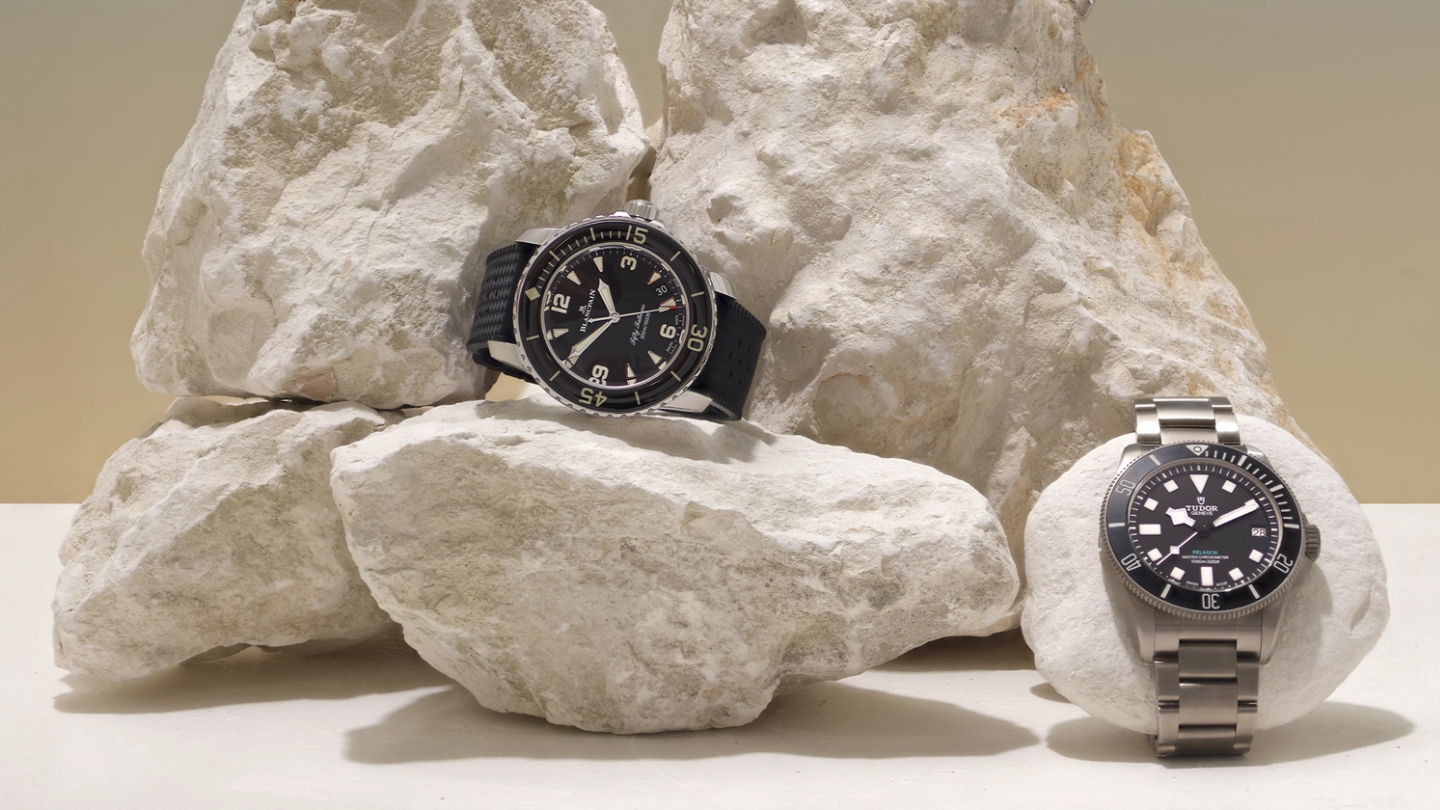

Words: Alex Doak
Will you ever really need to know what time it is in the Azores, while floating the cerulean shallows of Samoa? Omega seems to think so, and so it goes: its formidable new Seamaster Planet Ocean 600M Worldtimer for £14,000. It’s a black ceramic bathyscaphe for the wrist, with 24-time-zone functionality as well as the near-nonchalant capacity to chart depths that would usually crush your internal organs.
As someone who ‘harbours’ (thank you) an abject fear of open water, the answer will always be ‘no’ regardless of any semi-philosophical dive- watch debate. But, also, as the owner of five or six ISO 6425-compliant timepieces, I can concede that it’s a moot point. In the same way that you’ll never take that supercar to 200mph, or those ski- ing goggles will never be exposed to Everest levels of UV, the likelihood of your charting abysses worldwide with your beloved Rolex Submariner, Omega Seamaster, Blancpain Fifty Fathoms or unfathomably (again, thank you) affordable Seiko Prospex is moot. It’s just jolly reassuring to throw on a natty ticker that’ll weather the morning dog- walk through a deluge, or stylishly straddle a day at the beach with early evening sundowners.
From top, clockwise: OMEGA Seamaster Planet Ocean 600M Worldtimer, £14,000, omegawatches.com; LONGINES Legend Diver 39mm £3,150, longines.com TUDOR Pelagos Ultra, £5,070, tudorwatch.com BLANCPAIN Fifty Fathoms Automatique, £16,800, blancpain.com
The Fifty Fathoms Automatique — now in polished steel (£16,800) — set the stage for what we know as the modern Scuba diver’s watch, mostly down to its unidirectional rotating bezel. Unidirectional in the ‘anticlockwise’ sense, so a passing glance against a reef doesn’t nudge it the other way and give you the sense that there’s more oxygen in your breathing tank than planned for.
Longines went even further on the belt-and- braces front in the sixties with what’s now dubbed as the Legend Diver reissue; its bezel ring being internalised and only operable via a secondary screwed-down crown at two o’clock. Both crowns have cross-hatched engravings, implying super- compressor gasket seals — probably unnecessarily, but in new 39mm-wide, terracotta-dial guise (£3,150), an extra retro detail that charms as much as reassures. (Even if you’re just retrieving your toddler’s floaty after said sundowners)
Tudor’s Pelagos Ultra (£5,070) would rather the opposite, given its 1,000m dial demarcation. Titanium-cased, helium-escape-valve-fitted (should you be in the habit of long-term, pressurised ‘saturation’ diving) and precise in the face of the most magnetic of commercial oil-rig tools... it’s safe to say Rolex’s ‘little brother’ is most certainly all grown up and setting the standard for modern dive watches.
As for equally historic Breitling, up the valley road from Tudor HQ, in La Chaux-de-Fonds? The city’s altitude might be the highest of any city in Europe, but — much like watchmaker’s pilot watches — the new Superocean Heritage 42mm (£4,400) proves, in a hermetically sealed nutshell, how Switzerland’s finest have always traversed Earth’s extremes, despite being tucked away in the grassy foothills of the Jura mountains.
Precisely where your correspondent would always prefer to be, rather than under the waves. Wearing, admittedly, his own treasured 2007 Longines Legend Diver.
This article was taken from the summer 2025 issue of Gentleman's Journal, which you can read more about here.
Become a Gentleman’s Journal member. Find out more here.


